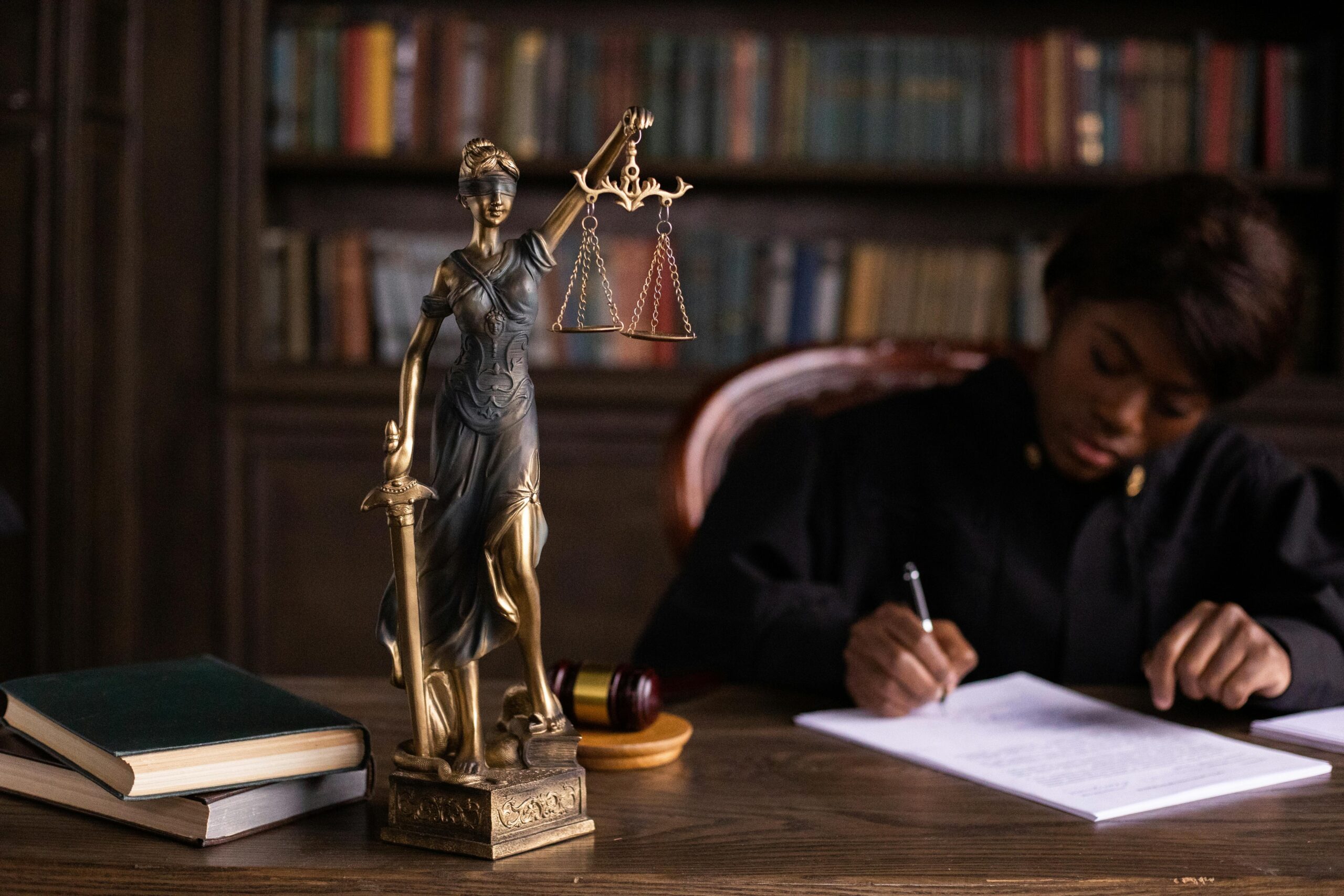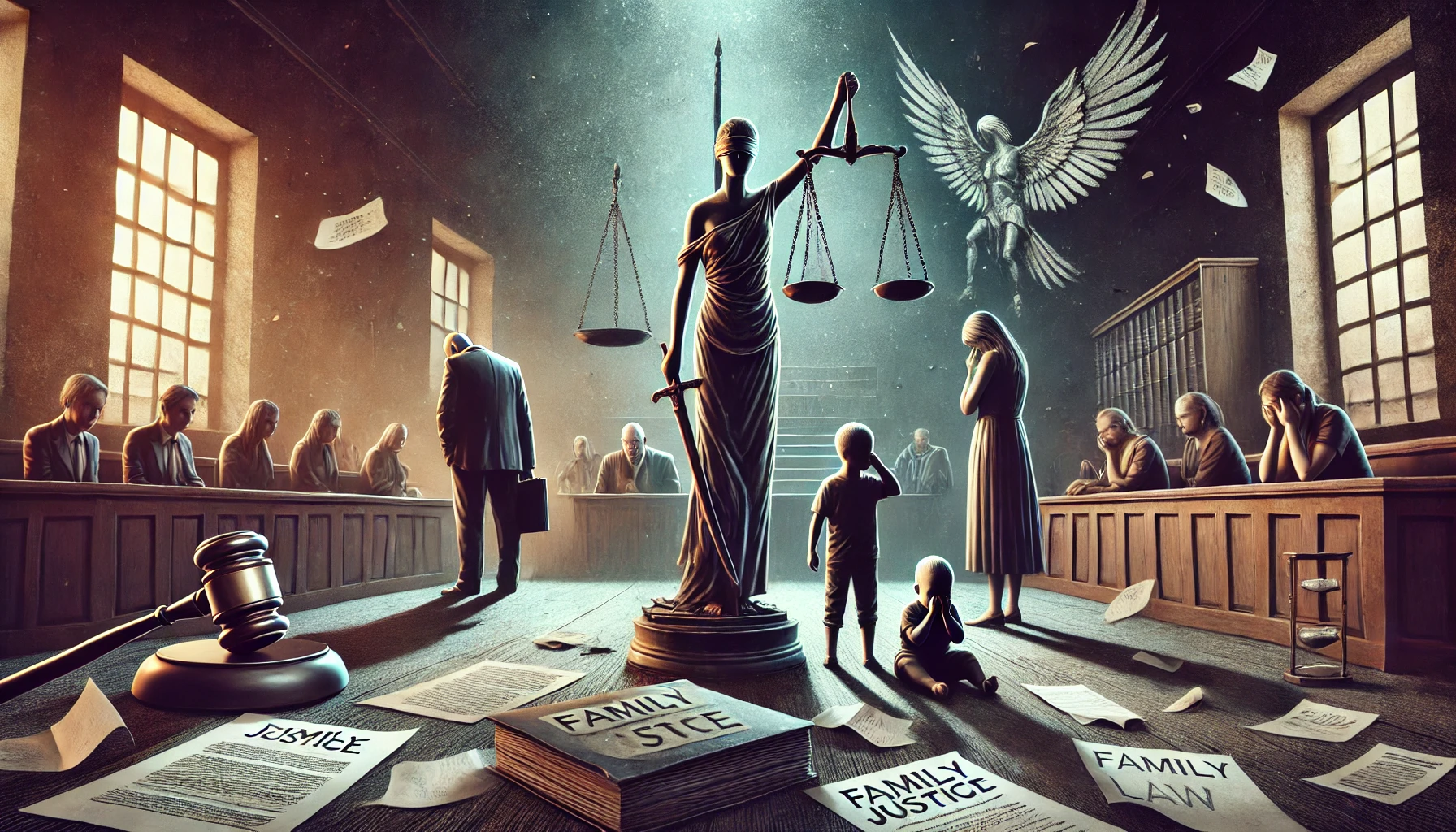Authored By: Akhi Akter Nishi
University Of Information Technology and Sciences (UITS)
Abstract:
Public violence against women is a severe issue that affects people all around the world. In essence, women’s spatial mobility in leaving the confines of the home may be interpreted as a sign of rebellion and deviation. This article investigates the alarming rise of gendered violence in public spaces in Bangladesh, where acts of assault and humiliation are increasingly framed as moral correction and celebrated by bystanders. Anchored in the recent Munshiganj launch incident, where two girls were beaten and publicly shamed, this study examines the failure of the legal and judicial systems to protect women against such violence. Despite a robust constitutional and statutory framework, including the Penal Code 1860 and the Women and Children Repression Prevention Act 2000, the gap between law and enforcement remains stark.
Drawing on doctrinal legal analysis, comparative law, and sociological theory, the article interrogates why judges often show leniency, how public morality transforms into sanctioned violence, and what role ideological groups like the Tawhidi Janata play in eroding the rule of law. By comparing Bangladesh’s response with legal models in the UK, USA, and India, the article underscores the urgent need for judicial reform, legislative clarity, and cultural change.
This paper argues that when laws fail to protect—and even appear to legitimize violence—public trust collapses. Legal protections must not only exist; they must operate with courage, consistency, and compassion.
Introduction:
Violence against women in public places is still a widespread and highly worrisome issue in Bangladesh, indicating larger social, legal, and political shortcomings that urgently deserve critical study. On May 09, 2025, a disturbing incident occurred on the Munshiganj launch, in Bangladesh[1], where two young women were physically assaulted by a man wielding a belt, who unapologetically justified his actions as a form of moral policing. Instead of protesting, the surrounding crowd laughed, filmed, and supported the perpetrator—some even commended his actions as virtuous. Such incidents, far from isolated, highlight a sobering truth: women’s safety in public places is jeopardized not only by individual criminals but also by a legal system distinguished by delay, social apathy, and ideological influence.
Gender-based violence in South Asia—and particularly in Bangladesh—has reached a point of dangerous normalization.[2] While statutory laws against sexual harassment and assault exist, their enforcement remains inconsistent and often selectively applied. Judicial decisions sometimes reflect leniency toward aggressors under the guise of tradition, morality, or public sentiment. More alarmingly, certain ideological groups, such as the so-called Tawhidi Janata (Monotheistic People or People of Unity), exert indirect influence over legal and social discourse, often advocating for moral vigilantism in ways that challenge the impartiality and strength of the legal system.
This study investigates the significant gap between statutory obligation and real-life experiences of women who have been subjected to public harassment, humiliation, and assault. It raises serious concerns regarding the status of the judiciary and the efficacy of legal systems in deterring and penalizing such behavior:
- Are judges becoming increasingly lenient towards perpetrators of gender-based violence?
- Does the Bangladeshi judicial system lack the efficacy and autonomy to punish offenders effectively?
- Is the rule of law being eroded under ideological pressures from informal moral enforcers?
- Why does societal praise often fall on those who publicly humiliate or assault women under the banner of morality?
The article uses doctrinal legal analysis, case studies, sociological theory, and comparative views to unravel the complexities of legal failure in the face of public gendered violence. It intends to contribute to a deeper understanding of why statutory protections fail to translate into real-world safety, and what reforms—legal, structural, and cultural—are urgently needed.
Background
Bangladesh has established a comprehensive legislative framework to protect women’s rights and dignity. Its Constitution promises equality before the law, the right to protection of the law, and guarantees against discrimination. Article 27 of the Constitution provides that “all citizens are equal before law and are entitled to equal protection of law,” while Article 28(2) prohibits discrimination on the grounds of sex.[3] Furthermore, Article 32 states that “no person shall be deprived of life or personal liberty save under law,” establishing a foundational commitment to bodily autonomy.[4]
In addition to constitutional guarantees, the Penal Code of 1860 criminalizes a wide range of activities that constitute sexual abuse and harassment. Section 354 penalizes assault or criminal force against a woman with the intent to affront her modesty, punishable with up to two years’ imprisonment, or with a fine, or both.[5] Section 509 addresses words, gestures, or acts intended to insult the modesty of a woman.[6] These prohibitions, which are vestiges of colonial-era legislative writing, frequently lack the clarity and seriousness required to handle modern realities of public and digital harassment.
The Women and Children Repression Prevention Act 2000 (Nari O Shishu Nirjatan Daman Ain) introduced specialized protections against serious offenses like sexual assault, trafficking, and acid violence.[7] Section 10 of this Act defines sexual oppression (nari nirjatan) and imposes penalties of up to life imprisonment in aggravated cases.[8] However, despite its intent, the implementation of this law suffers from prolonged delays, low conviction rates, and frequent misuse.[9]
On the international level, Bangladesh adopted the Convention on the Elimination of All Forms of Discrimination Against Women (CEDAW) in 1984, demonstrating a formal commitment to international gender equality norms.[10] Nonetheless, the country expresses misgivings about Articles 2 and 16 of CEDAW, which deal with fundamental state commitments to eliminate discrimination and achieve equality in marriage and family relations, limiting the treaty’s full domestic impact. [11]
Judicial recognition of gender-based violence as a human rights concern has gradually emerged, though inconsistently. In State v. Md. Ismail Hossain, the High Court Division stated the obligation of the state to protect women from systematic abuse.[12] However, other cases have demonstrated judicial hesitation, especially when matters of morality or public sentiment are invoked in the courtroom.
Despite these legal improvements, the social perceptions of “honour,” “modesty,” and “morality” continue to confuse the lines between protection and patriarchal power. Laws intended to protect women are frequently selectively implemented, interpreted, or enforced in ways that reinforce gender stereotypes. The contradiction between statutory objectives and societal behavior is at the heart of this article’s analysis.
When Protection Fails – The Law and Its Limits
Despite a comprehensive legal framework, the promise of protection for women in Bangladesh often collapses in the face of weak enforcement and societal complicity. The Constitution guarantees equality and personal liberty, and statutes like section 354 of the Penal Code 1860 and the Women and Children Repression Prevention Act 2000 criminalize sexual violence.[13] Yet these protections frequently fail where they are needed most—on the streets, in public transport, and in moments when women are visibly vulnerable.
The recent launch incident, where two teenage girls were publicly assaulted under the guise of moral correction, illustrates the growing chasm between law on paper and law in practice.[14] Public spaces, instead of being safeguarded by state institutions, are increasingly governed by informal actors who invoke religion or social norms to justify acts of violence.[15] Groups like the Tawhidi Janata (People of Unity) function as moral vigilantes, and their unchecked interference reflects a dangerous weakening of state authority and judicial independence.
Law enforcement agencies often hesitate to act in such cases, especially when public sentiment favors the perpetrator.[16] Judicial decisions, too, sometimes reflect implicit biases—treating gender-based violence as isolated incidents rather than structural problems rooted in patriarchal norms. Compounding this is the absence of a dedicated anti-sexual harassment statute. While the judiciary has issued progressive directives, such as in BNWLA v Government of Bangladesh,[17] these remain limited in scope and largely unenforced.
Evidentiary burdens, social stigma, and fear of reprisal further discourage victims from seeking justice.[18] For many women, the legal system is not a path to redress but another terrain of trauma.
Ultimately, legal protection that exists without enforcement is symbolic at best and deceptive at worst. If the judiciary and state institutions cannot insulate themselves from ideological or societal pressures, the law will remain a selective instrument, reliable for some, unreachable for others. This failure not only undermines public trust but also perpetuates a culture in which gender-based violence is normalized, even celebrated.
Public Morality as Violence
One of the most disturbing questions highlighted by recent public incidents is why perpetrators of gendered violence are hailed as moral heroes. The launch assault, in which a man struck two girls and was praised by witnesses for “teaching them a lesson,” is not an isolated incident, but rather reflects a broader social illness.[19] Violence is reframed as a virtue in this context, and moral policing is elevated to the status of public performance, supported by the community, and sanctioned by the legal system.
Such acts directly contradict Bangladesh’s constitutional safeguards. Article 32 protects the right to life and personal liberty, whereas Article 35(5) prohibits inhumane or humiliating treatment.[20] The law neither sanctioned nor protected any type of extrajudicial punishment, whether administered by people or ideological organizations. However, the silence of law enforcement in such circumstances indicates a corrupted justice system, which frequently fails to act when violence is done under the guise of morality.
This raises the serious question: can our judicial system apply equally when the perpetrator is regarded as the guardian of public values? The answer now appears to be no. Moral vigilantism is occasionally accommodated by law enforcement agencies and even court narratives, particularly when actors like the Tawhidi Janata use religious or cultural rhetoric to legitimize their actions.[21] This not only encourages more acts of public discipline, but it also weakens the state’s legal obligation to provide equal protection under the law.
The glorification of moral enforcers—those who “correct” women by delivering flowers after harassment or public shaming—indicates a dangerous cultural inversion in which the aggressor is celebrated while the victim is hushed.[22] Such appreciation strengthens the impression that women’s bodies are subject to community regulation, rather than individual autonomy, which breaches the concept of bodily integrity recognized in constitutional and international law.⁵
Thus, in these circumstances, public morality becomes a socially sanctioned kind of violence, aided by a state that all too frequently turns a blind eye. When courts, police, and residents collectively accept or cheer such behavior, the law not only fails but also contributes to harm.
A System Under Strain: Judicial Leniency and Eroding Accountability
The Munshiganj incident saw the perpetrator’s release on minimal bail despite facing life imprisonment under the Women and Children Repression Prevention Act (s 10)[23]. This raises concerns about the judicial system’s inability to keep perpetrators of gender-based violence incarcerated. The repeated failure to punish such offenders highlights enforcement gaps and a deeper institutional problem within the judiciary. This raises an urgent question: are judges becoming too lenient toward those who commit public violence against women, especially when cloaked in the language of morality or social order?
While judicial independence is a cornerstone of constitutional governance in Bangladesh, there is growing concern that public sentiment, political pressure, and ideological influence are eroding this independence.[24] In high-profile cases, courts have at times shown reluctance to impose harsh penalties, particularly when the accused claims to have acted in “good faith” or for “moral correction.”[25] This discretionary leniency, though legally permissible, can effectively delegitimize the suffering of victims and send a dangerous signal of tolerance for mob-style justice.
The Constitution guarantees equal legal protection (Article 27) as well as the right to human dignity (Article 11). [26] However, when religious populism or community pressure dictates legal decisions, as demonstrated by groups like the Tawhidi Janata, informal power structures may co-opt the judicial process. This convergence of legal and intellectual systems creates an environment conducive to impunity, particularly among those who justify their violence as moral.
Furthermore, judicial delay, under-resourced courts, and procedural inefficiency compound the crisis.[27] Victims often abandon their pursuit of justice due to the slow pace of proceedings and hostile courtroom environments. The lack of trauma-informed legal processes further alienates women, whose cases are sometimes trivialized or dismissed altogether.
This weakening of judicial accountability is not merely a legal failure—it is a democratic failure. When courts do not uphold the rights of vulnerable citizens, especially women facing public abuse, they abandon their constitutional mandate. If the judiciary continues to show tolerance toward moral enforcers while failing to protect victims, the law itself becomes complicit in the cycle of violence.
Discussion:
Reclaiming Law from the Hands of Vigilantism
The rise of moral vigilantism in Bangladesh, where individuals justify violence against women in the name of morality or religion, is not only a human rights crisis but a failure of the legal state. When women are assaulted in public and perpetrators are praised instead of prosecuted, we must confront not only the failure of law enforcement but the weakening of our judicial values.
To prevent further erosion of public trust, Bangladesh must reform both its legal enforcement mechanisms and its cultural narratives around morality and violence.
Legal and Institutional Reform
Bangladesh lacks a specific Anti-sexual harassment law for public places. While the Penal Code 1860 and the Women and Children Repression Prevention Act 2000 ban various forms of abuse, enforcement is spotty, slow, and frequently influenced by public opinion.[28] A comprehensive Sexual Harassment Prevention Act, encompassing public transportation, streets, schools, and internet areas, is a legal requirement. It should have trauma-sensitive reporting systems, victim protection measures, and community accountability procedures.
Learning from Other Jurisdictions
The Sexual Offences Act 2003 in the United Kingdom criminalizes sexual harassment, exposure, and unwanted touching.[29] Police officers are trained in gender-sensitive response techniques, and there are clear legal guidelines for consent and protection of victims. Victims of repeated unwelcome behavior in both personal and public contexts can also pursue civil remedies under the UK’s Protection from Harassment Act 1997.[30]
Similarly, in the United States, institutions are mandated by Title IX of the Education Amendments Act of 1972 to prevent and respond to sexual harassment, including public or peer-perpetrated occurrences.[31] Courts in the US have also recognized street harassment and stalking as constitutional violations of equal protection when the state fails to act.[32] These systems show that legal protection need not be confined to intent to rape or severe bodily harm—it can and should protect a woman’s right to dignity in public.
Judicial Training and Oversight
Bangladeshi judges must undergo continuous judicial education on gender, power, and social bias. Judicial discretion cannot be used to excuse violence committed under the pretext of “moral correction.” As seen in Vishaka v State of Rajasthan, the Indian Supreme Court effectively intervened with mandatory guidelines in the absence of legislative action.[33] A similar proactive stance from the Bangladeshi judiciary could fill legislative gaps.
A Call to Conscience
To ask “Where is women’s safety in public places?” is to interrogate the very foundation of our legal and moral order. Suppose the judiciary, police, and society continue to treat gendered violence as a cultural correction rather than a constitutional crime. In that case, justice will remain symbolic—accessible to the few, and fatal for the rest.
This article urges readers, legal scholars, judges, and policymakers to recognize that real morality lies in upholding dignity, not disciplining bodies. If we do not act now, the question will no longer be “Why did the law fail?”—but “Who allowed it to?”
Conclusion
This article has examined the alarming rise of gendered violence in public spaces in Bangladesh, where acts of harassment and assault are increasingly justified through distorted notions of morality. The key findings reveal a troubling pattern: legal protections exist, but enforcement is weak, judicial responses are often lenient, and cultural norms continue to glorify perpetrators rather than protect victims.
We discussed how Bangladesh’s legal framework, though rooted in constitutional values, is undermined by ideological interference, mob validation, and institutional inertia. Comparisons with the UK, USA, and India demonstrate that stronger legal instruments, judicial training, and public accountability can transform this landscape.
The safety of women in public is not just a legal issue—it is a measure of a society’s justice. Until Bangladesh reclaims the law from the grip of moral vigilantism and affirms dignity as a non-negotiable right, public spaces will remain battlegrounds for control, not freedom.
The law must not only speak—it must act.
Reference(S):
Primary Sources
Legislation – Bangladesh
- Constitution of the People’s Republic of Bangladesh 1972
- Penal Code 1860
- Women and Children Repression Prevention Act 2000
Legislation – International and Foreign
- Convention on the Elimination of All Forms of Discrimination Against Women (adopted 18 December 1979, entered into force 3 September 1981) 1249 UNTS 13
- Sexual Offences Act 2003 (UK)
- Protection from Harassment Act 1997 (UK)
- Title IX of the Education Amendments Act 1972, 20 USC § 1681 (US).
Cases
- BNWLA v Government of Bangladesh (2009) 29 BLD (HCD) 415
- State v Md Ismail Hossain (2015) 67 DLR (HCD) 22
- Vishaka v State of Rajasthan AIR 1997 SC 3011 (India SC)
- MacKinnon v University of Minnesota 129 F3d 1249 (8th Cir 1995).
Secondary Sources
Books
- Catharine A MacKinnon, Sex Equality (3rd edn, Foundation Press 2007)
Journal Articles
- Rashida Manjoo, Report of the Special Rapporteur on Violence against Women, its Causes and Consequences (UNGA, 2012) UN Doc A/HRC/20/16..
- Saira Rahman Khan, ‘Laws on Violence Against Women in Bangladesh: An Overview’ (2009) 6(2) Bangladesh Journal of Law
- Yasmeen Haque, ‘Judicial Attitudes to Violence Against Women in Bangladesh’ (2016) 23(1) Bangladesh Journal of Law 14
- Farzana Akhter, ‘Gender-Based Violence and Law Enforcement in Bangladesh’ (2021) 19(2) Asian Journal of Law and Society 85
- Shahdeen Malik, ‘The Judiciary in Bangladesh: Independence or Submission?’ (2011) 10(2) South Asian Journal of Law and Human Rights 112
Web and News Sources
- ‘লঞ্চে দুই তরুণীকে বেল্ট দিয়ে পেটানো তরুণসহ ২৫ জনের বিরুদ্ধে মামলা’ Prothom Alo,(Munshiganj, 11 May 2025)
- Government of Bangladesh, ‘CEDAW Country Report’ (2016) https://tbinternet.ohchr.org/_layouts/15/treatybodyexternal/Download.aspx?symbolno=CEDAW/C/BGD/8 accessed 10 June 2025
[1] ‘লঞ্চে দুই তরুণীকে বেল্ট দিয়ে পেটানো তরুণসহ ২৫ জনের বিরুদ্ধে মামলা’ Prothom Alo,(Munshiganj, 11 May 2025)
[2] Rashida Manjoo, Report of the Special Rapporteur on Violence against Women, its Causes and Consequences (UNGA, 2012) UN Doc A/HRC/20/16.
[3] Constitution of the People’s Republic of Bangladesh 1972, art 27
[4] Ibid, art 32.
[5] Penal Code 1860, s 354.
[6] Ibid, s 509.
[7] Women and Children Repression Prevention Act 2000.
[8] Ibid, s 10
[9] Saira Rahman Khan, ‘Laws on Violence Against Women in Bangladesh: An Overview’ (2009) 6(2) Bangladesh Journal of Law 1, 14–16.
[10] Convention on the Elimination of All Forms of Discrimination Against Women (adopted 18 December 1979, entered into force 3 September 1981) 1249 UNTS 13 (CEDAW).
[11] Government of Bangladesh, ‘CEDAW Country Report’ (2016) https://tbinternet.ohchr.org/_layouts/15/treatybodyexternal/Download.aspx?symbolno=CEDAW/C/BGD/8 accessed 10 June 2025.
[12] State v Md Ismail Hossain (2015) 67 DLR (HCD) 22.
[13] Penal Code 1860, s 354; Women and Children Repression Prevention Act 2000, s 10.
[14] n1
[15] Yasmeen Haque, ‘Judicial Attitudes to Violence Against Women in Bangladesh’ (2016) 23(1) Bangladesh Journal of Law 14, 18
[16] Farzana Akhter, ‘Gender-Based Violence and Law Enforcement in Bangladesh’ (2021) 19(2) Asian J of Law and Society 85, 91.
[17] Bangladesh National Women Lawyers Association (BNWLA) v Government of Bangladesh (2009) 29 BLD (HCD) 415.
[18] Saira Rahman Khan, ‘Laws on Violence Against Women in Bangladesh: An Overview’ (2009) 6(2) Bangladesh Journal of Law 1, 9.
[19] n1
[20] Constitution of the People’s Republic of Bangladesh 1972, arts 32, 35(5).
[21] Farzana Akhter, ‘Gender-Based Violence and Law Enforcement in Bangladesh’ (2021) 19(2) Asian J of Law and Society 85, 89.
[22] Convention on the Elimination of All Forms of Discrimination Against Women (CEDAW) (adopted 18 December 1979, entered into force 3 September 1981) 1249 UNTS 13, arts 1–2.
[23] Women and Children Repression Prevention Act 2000 (Bangladesh), ss 9–10.
[24] Shahdeen Malik, ‘The Judiciary in Bangladesh: Independence or Submission?’ (2011) 10(2) South Asian J of Law and Human Rights 112.
[25] Yasmeen Haque, ‘Judicial Attitudes to Violence Against Women in Bangladesh’ (2016) 23(1) Bangladesh Journal of Law 14, 22.
[26] Constitution of the People’s Republic of Bangladesh 1972, arts 11, 27
[27] Saira Rahman Khan, ‘Access to Justice for Women: Case Backlogs and Structural Barriers in the Bangladesh Judiciary’ (2018) 10(1) Bangladesh Legal Studies Review 34, 37–38.
[28] Penal Code 1860, s 354; Women and Children Repression Prevention Act 2000, s 10.
[29] Sexual Offences Act 2003 (UK), ss 1–4, 15.
[30] Protection from Harassment Act 1997 (UK), s 1.
[31] Title IX of the Education Amendments Act 1972, 20 USC § 1681 (US).
[32] MacKinnon v University of Minnesota 129 F3d 1249 (8th Cir 1995); Catharine A MacKinnon, Sex Equality (3rd edn, Foundation Press 2007) ch 9.
[33] Vishaka v State of Rajasthan AIR 1997 SC 3011 (India SC).





